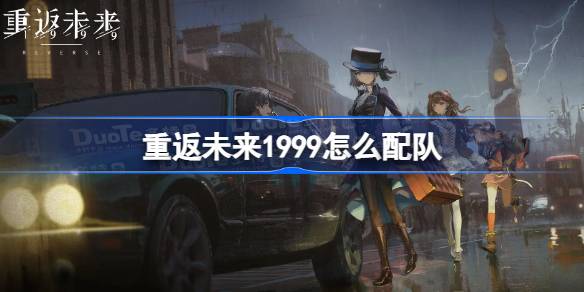Back to the Future 1999 has launched an open beta today. Many friends have drawn a lot of characters. Many friends want to know how to form a team in Back to the Future 1999. Now the editor has brought a guide to how to form a team in Back to the Future. Let’s take a look. Bar.

Back to the Future 1999 is a turn-based game with many characters. Faced with a variety of skills and character traits, how to match the team more reasonably must be a point that Si Chen is very tangled in.
Here are two formation ideas for everyone.
The first type is to position the formation according to the role.
We can roughly divide the roles into two categories: output (C position) and auxiliary according to their skill sets. Then, because of the characteristics of turn-based games, we take treatment (milk) out of auxiliary. And because the taunting skill can force the enemy to focus its firepower on the character who activated the skill, thus protecting our other squishy or remaining-healthy characters, we then use the character who mainly provides the taunting effect as an injury resistance position. Therefore, role positioning is mainly divided into four categories: output, treatment, assistance, and injury resistance.
When Si Chen forms a team, it is enough that the first three characters meet the requirements of DPS + Healing + Any. For example, Red Crossbow (output) + Lala Spring (auxiliary, healing) + Sonnet (auxiliary)/APPle (semi-healing C)/Star Eye (resistance to damage)/East of Berlin (auxiliary C).
The second type is to form teams based on skill types.
Before we study team matching, we first classify skill types. Character skills can be roughly divided into four categories: output, treatment, assistance, and control. The output includes both reality and spirit; treatment is divided into group treatment and single treatment; assistance includes increasing the passion of others (which does not exist in mysticism), shielding, and skills related to gain and debuff; control includes being unable to move and reducing passion. , taunt and other skills that hinder or affect the release of enemy skills.
When forming a team, first consider the mystery combination of the three starting characters.
First, we need to understand some skills with combination mechanisms. ① Critical hit damage + critical hit double resistance debuff. ②When the target is under debuff or control, damage + debuff and control will be added. ③Petrification + stiffness. ④Add damage + gain when in buff. If the character in combat has the former skill, it is best to match a character with the latter skill when forming a formation.
Then, let’s talk about specific team formation ideas. A more general way of matching is to arrange the 6 mysterious spells of the first 3 characters according to 3-4 output + 0-2 assistance/control + 1-2 treatment. Let's take two examples: ① Centurion (2 output) + Sonnet (1 auxiliary and 1 control) + Pamier (1 output and 1 treatment). Overall, it is 3 output + 1 auxiliary + 1 control + 1 treatment. ② Star Antimony (2 outputs) + APPle (1 output, 1 treatment) + Lalaquan (1 output, 1 treatment), overall it is 4 outputs + 2 treatments.
After considering the Mysteries, let us turn to the Final Rites. Usually a combination of point burst + group damage + fill-in is chosen. Also use the example given above. ①Pamie point bursts, Centurion's group damage, the team has few group-on-group skills, Sonnet's Ending Ritual replenishes group damage, and can also provide defense reduction assistance. ② Lalaquan point burst comes with passion reduction control, Star Antimony group damage comes with group mystery immunity assistance, and APPle group damage comes with treatment. Star Antimony and Apple's final ritual can make up for the shortcomings of the enemy's slow blood loss or our own's fast blood loss caused by the lack of support. However, this team obviously lacks point burst, so it is not as ideal as the formation in the first example.
use